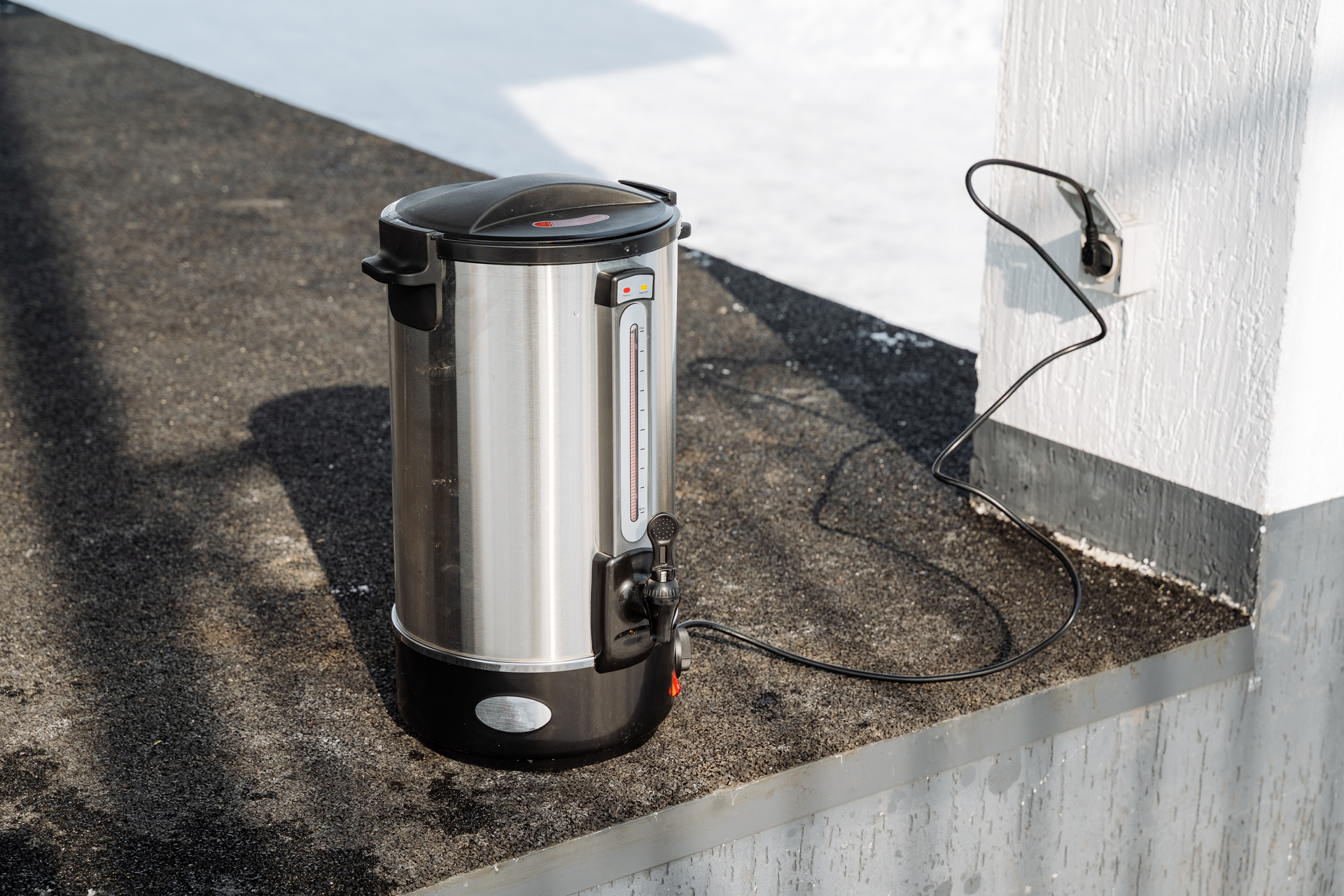
AN ELECTRIC HOT water urn requires tevilas keilim if it contains metal components that come into direct contact with the water. If the urn is plastic and only the heating element is metal, some Poskim say it does not require tevila. However, most urns do have metal parts that touch the water, and therefore tevila with a brocha is required.
Practical Challenges
A major issue with electric appliances is that immersion can damage or ruin them. Nevertheless, the mitzvah of tevilas keilim still applies, and Halachic solutions should be considered.
Option 1: Careful Immersion and Drying
One approach is to fully immerse the appliance in a mikvah and then allow it to dry thoroughly—typically several days—before using it. Many report success with this method if the urn is dried properly, but this may still carry a risk of damaging the appliance. Although many Rabbonim support this practice, no guarantee can be made that the device will remain functional. This is not an electrician-certified solution.
Option 2: Gifting to a Non-Jew
Another temporary solution is to gift or sell the appliance to a non-Jew and then borrow it back. Since the utensil is no longer owned by a Jew, it is exempt from tevila while in use.
However, this is considered a short-term leniency and should only be relied upon for temporary use. If the appliance will remain in a Jew’s possession on a long-term basis, this approach is not sufficient, and tevila will be required.
Option 3: Jewish Modification or Assembly
According to most Poskim, the only fully Halachically valid workaround to avoid immersing an electric appliance—such as an urn—is to have a Jewish uman (a
qualified professional) completely dismantle and then reassemble the device. In Halacha, when a Jew constructs or completes the final form of a utensil, it is considered as if the Jew made it, and it is exempt from tevila. However, this process must involve a level of disassembly that renders the appliance entirely nonfunctional, and it must be complex enough that only a professional could reassemble it properly. Simple disassembly and reassembly that a layperson could perform is not sufficient to meet this Halachic standard.
Additionally, merely disabling part of the device, such as removing the plug or disconnecting a component, does not qualify as dismantling. If the urn is still able to hold water during the process, it is not considered halachically “broken.” Therefore, actions like replacing the electric plug—even if done by a Jew—do not qualify as creating a new utensil and do not exempt the appliance from tevila.
Purchasing an urn manufactured under Jewish ownership is also a viable option.


 EN
EN  ZH
ZH  KR
KR  BR
BR  ES
ES  IN
IN  IL
IL  JP
JP 



